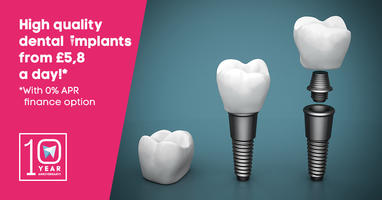As dental implants become more and more popular, and are more and more widespread, they will inevitably become cheaper, to become even more accessible, becoming a truly household item. As this process inevitably occurs, we will see dental implants being involved in conjunction with more and more dental treatments. One of the main ones that is causing a lot of questions is orthodontic treatment with dental implants. How does it work? Does it work? Can dental implants be aligned? How far? In what way? These are the questions we hope to answer today.
Orthodontic treatment
Dental implants are there to replace tooth roots. Orthodontic treatment seeks to align the roots of the teeth as well as the crowns; so technically, it could rotate, push or pull the dental implant in question to a different place. But dental implants are placed artificially, and are thus placed at an angle that is good to begin with, making their treatment unnecessary.

Proper timing
If an orthodontic treatment has already begun, or dental implants become absolutely necessary, they can be combined, but only with the proper timing. Most orthodontists recommend getting orthodontic treatment first, and getting dental implants afterwards. This is because dental implants cannot be moved easily, and should not be moved as they cause damage to the soft tissues. By getting orthodontics, you will have your teeth aligned the way they will hopefully look in the future, making dental implant placement safer and easier for you and your dental implantologist.
Necessity
But sometimes the teeth are already extracted, and the dental implants need to go in to prevent loss of the alveolus, or perhaps they are already in by the time orthodontic treatment should begin. In these cases, only begin orthodontic treatment after your dental implant treatment is complete. In certain cases, depending on the severity of treatment and the location of the dental implant, artificial teeth can be used as anchors for rows of braces, especially for functional appliances. So while not impossible, getting braces with already existing dental implants is difficult. Frequently, dental implants are used to replace teeth that had to be extracted as a result of orthodontic treatment (although those teeth usually aren’t replaced, as there is no room for them in the mouth).
Usually it is best to get dental implants after the orthodontic treatment is complete, and if you have a choice, definitely go with this option. You should coordinate between your orthodontist and your dentist, and see what kind of options may be right for you, as each case is completely unique, and may warrant different approaches to guarantee success. Ask your orthodontist what options you have.
Image: 1.

